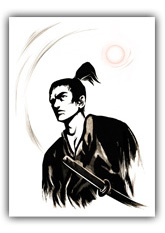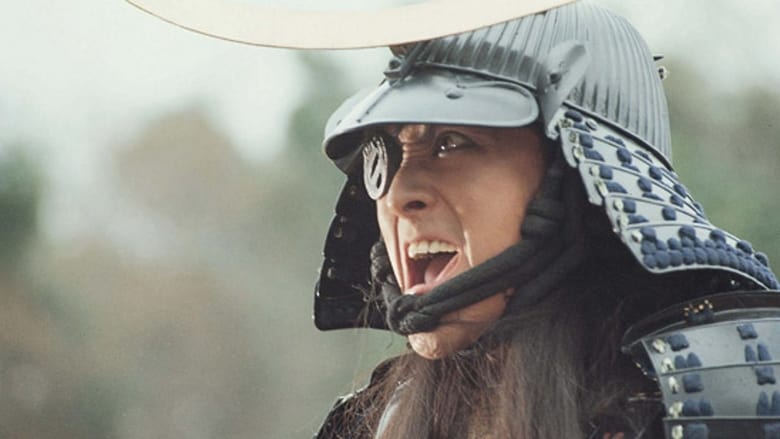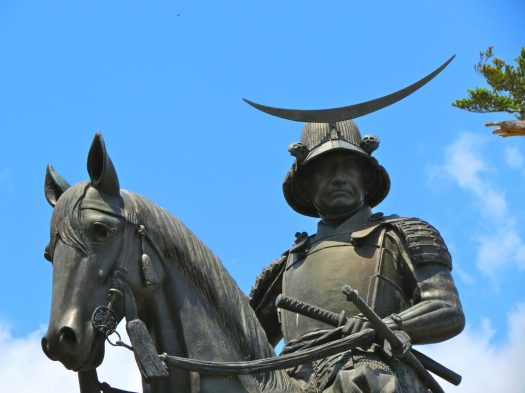Date Masamune: The One-Eyed Dragon of Oshu
sengoku jidai
-

Rectitude carried to excess hardens into stiffness; benevolence indulged beyond measure sinks into weakness.
– Date MasamuneRectitude carried to excess hardens into stiffness; benevolence indulged beyond measure sinks into weakness.
– Date MasamuneDate Masamune (1567–1636) was a warrior in Japan’s Tohoku region. Known as Dokuganryū (独眼竜), the “One-Eyed Dragon of Ōshu,” Masamune was an outstanding tactician, a brilliant leader, a fearless warrior and the lord of Sendai. He was respected amongst the samurai as being loyal, ethical but totally ruthless, a most able administrator, and an aggressive and ambitious daimyo.
Date Masamune was born to Date Terumune, lord of Mutsu, in Yonezawa Castle, modern-day Yamagata Prefecture. He lost his right eye to smallpox as a child and had the offending eye removed, which led to his mother branding him unfit to inherit leadership of the clan. He won his first battle at the age of 14 in 1581 and, at 18, became the seventeenth head of the Date family.Once you define your goal, all you need is an iron will and a sharp mind to achieve it. Nothing is unattainable, obscure, or ‘unrealistic’, but you must approach it properly. If a goal is farfetched and complex, break it down into smaller, simpler steps, even if there are thousands. Stay true to yourself until the end. Probably the hardest thing is to overcome one’s inner apathy. But if you are really persistent, life itself will lend you a helping hand. When you’ve achieved success, rejoice over your victories and count them every day. Only free persons do whatever they want. This kind of living is harder, but it makes your life worthy and meaningful.
– A. R. Berg, Spirit of the WarriorAs leader of the Date clan following his father’s retirement, Masamune went from strength to strength conquering surrounding domains while strengthening his own. Unable to stave off Masamune’s advances into their territory, the neighboring Hatakeyama clan appealed directly to Masamune’s father, asking him to control his son’s military actions. When Terumune admitted he was unable to stop his son, the Hatakeyama took the old lord prisoner. Masamune was on a hunting expedition with his retainers when news of the kidnapping was received. Masamune and his men caught up with the kidnappers as they were attempting to cross a river. Terumune shouted orders that Masamune was to kill them all, even at the cost of his own life. Masamune obeyed, and the entire party, including his father, were slain. As further retribution, Masamune ordered that the families of the kidnappers be hunted down, tortured and executed.
Rulers do not always act in accord with the Laws of Heaven and may persuade a warrior to do deplorable things. A samurai must be ruled by his conscience first; otherwise he will be nothing more than a bloody tool trapped in immoral hands. Ultimately, samurai serve only one Shogun – the Heavenly one.
The Universe is orderly. Planets avoid colliding because they stay at a distance from one another. In the same way, a samurai should maintain space between himself and others while at the same time establish cordial relationships with them. The ability to be among many but remain alone gives him Force. This is the conduct of a samurai.
– A. R. Berg, Spirit of the Warrior
Ordered by the nation’s ruler, Toyotomi Hideyoshi, to participate in the 1590 Siege of Odawara, Masamune refused at first, greatly infuriating Hideyoshi. Eventually, he was no longer able to ignore the orders, and expecting to be executed for failing to obey, presented himself before Hideyoshi dressed in his best clothing, and devoid of any fear. On this occasion, Hideyoshi spared his life, suggesting that Masamune may one day be of some use. Masamune would prove his loyalty, and to be of great use, excelling himself during Hideyoshi’s Korean campaigns.
Toyotomi Hideyoshi provided him with lands at Iwadeyama, now Miyagi Prefecture, where Masamune was based for 13 years and reformed the area into a prosperous economic and political center. His financial prowess would later turn the small fishing village of Sendai into a large and economically powerful city.
The samurai are the rulers, the enlightened warriors whose principles are intertwined with their destiny. Leaders from all eras can learn from the samurai and their simple belief that every person honorably fulfils their predetermined duty. If you are a ruler, be honest. If you are a bodyguard, give your life to protect your master. If you are a merchant, be decent. Cast aside the lies, and truth will triumph.
– A. R. Berg, Spirit of the WarriorUpon the death of Toyotomi Hideyoshi, Masamune turned his support to that of Tokugawa Ieyasu, who awarded him Sendai Domain, with a supposed income of one million koku, however, despite the many improvements, the land yielded only 640,000 koku.
In 1600, in the lead up to the Battle of Sekigahara, Masamune supported the Tokugawa cause by fighting the Uesugi clan in the northern districts, allowing Ieyasu to concentrate on the growing Western allied forces under Ishida Mitsunari. Although Masamune was not on the actual battlefield at Sekigahara, his actions greatly assisted the Eastern victory.
A soldier must have the courage to attack and defend. Courage must not be accompanied by hesitation, though. This is why he must cultivate courage throughout his life. With fortitude, he is ruthless and decisive. He always turns his decisions into action.
– A. R. Berg, Spirit of the WarriorFollowing Sekigahara, Date Masamune and 52,000 of his samurai and their families relocated from Iwadeyama to the village of Sendai.

Statue of Date Masamune in Sendai (source)From here Masamune commenced many public works to improve the land and beautify the Tohoku region, making it a tourist destination. He improved trade, and allowed foreign missionaries and traders to operate in his domain, going as far as to utilize foreign ship construction techniques to build the Date Maru, a ship he sent on the first Japanese diplomatic mission to the Philippines, Mexico, Spain and Rome for an audience with the Pope, and to obtain trading rights with the various countries along the route.
Labor is a blessing, respect it. Labor is essential for the spiritual growth of a human being. Doing nothing is immoral, and idleness is a sin. The samurai were obliged to assist and protect the people, even at the expense of their own lives.
– A. R. Berg, Spirit of the WarriorMasamune had 16 children, two of whom were illegitimate, with his wife and seven concubines. Date Masamune died aged 68 on June 27, 1636. For most Japanese residents, when it comes to Date Masamune, the iconic armor "Kuro Urushi Gomaidō Gusoku" immediately comes to mind. He is often portrayed as wearing a sword guard as an eye patch. It is unclear why black was chosen as the base color, but it might have had something to do with Masamune losing his right eye during his childhood. Researchers think this was an attempt by Masamune, who was well-versed in Chinese classics, to emulate Li Keyong, otherwise known as Ri Kokuyō in Japan. Just like Masamune, Li Keyong had one eye. A brave general involved in the northeastern part of 10th century China, he had consolidated administrative power and helmed a military troop, whose military garb had been standardized to be black. With his black armor and helmet that bore the shape of a crescent moon, Date Masamune is a famous historical figure who has been depicted in dramas, animations, and even games.
曇りなき 心の月を 先だてて 浮世の闇を 照らしてぞ行く
My life was just like running in the darkness with only light of moon. I was just moving forward according with what I believe is right in Sengoku.
– Date Masamune
Sources:
https://samurai-world.com/date-masamune/
https://livejapan.com/en/in-tohoku/in-pref-miyagi/in-sendai_matsushima/article-a3000059/
Back to the Blog
